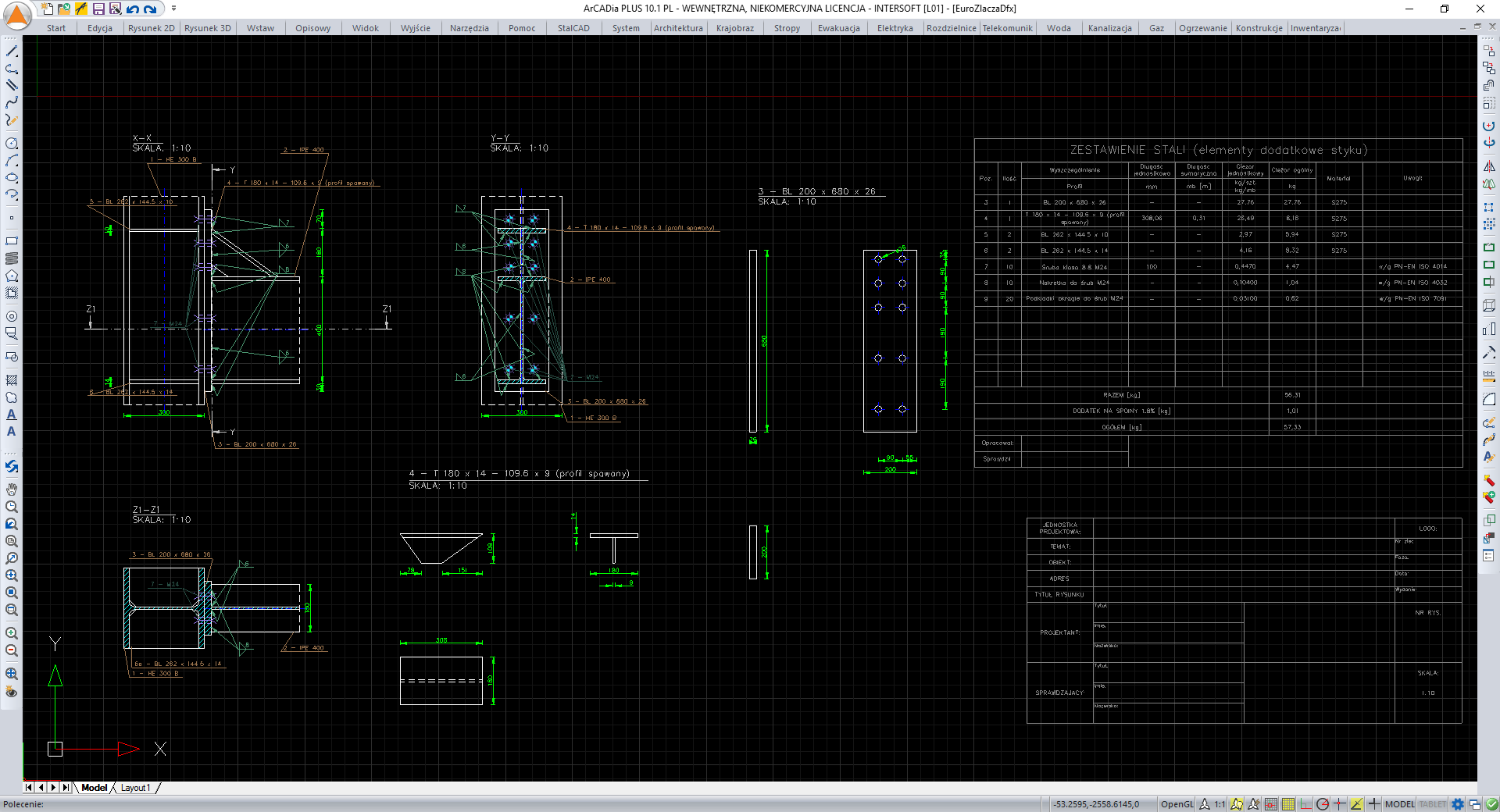What are EuroConnections?
EuroConnections is a collection of programs (design modules) for steel connection design. User can design and verify the capacity of typical uniplanar frames, lattice connections & column bases in steel structures according to Eurocode 3.
A detail-rich actual construction drawing is generated for each connection model in an editable DXF file format.
The performed calculations are of an analytical nature, using the provisions and procedure contained in the relevant standards. User can design and verify the capacity of typical uniplanar frames & lattice connections in steel structures on the provisions of PN-EN 1993-1-8:2006 standard, or biplanar column base according to PN-EN 1993-1-8:2006 and PN-EN 1992-4:2018-11 standards.
The weld size limits are verified in accordance with the guidelines of the PN-EN 1708-2:2019-02 standard.
What can be done using EuroConnections?
EuroConnections contain a library of rolled and cold-formed profiles. Users have the option of creating welded or bolted connections in various joint types. Various additional connection components can be used, depending on the specific connection type: side plate, fin plate, flange cover plate, landing cleat, end plate, base plate, stiffener plate, haunch, shear nib, gusset plate, etc.
The application automatically detects the majority of the most common design errors and mistakes (such as a bolt collisions, cross-sections overlapping, etc.) even before the stage of actual calculations and verifications based on the standard.
EuroConnections operates in a standalone mode, or as a design module for steel connections calculations in the ArCADia-RAMA structural analysis & design program.
While in cooperation with ArCADia-RAMA, profiles and other parameters of the bars involved in selected joints as well as sets of internal forces are transferred from the structural model to the EuroConnections program, and the connection verification result summary is returned and presented alongside the static analysis, the results of ArCADia-RAMA program model.
The detailed model of the created steel connection is also saved in the ArCADia-RAMA project save file.
Reports with verification result in RTF or PDF format can be created in four different detailed levels with the option of customizing their scope by the user.
What connection types are supported?
The application enables modeling and verification of 11 types of connections categorized into 4 groups:
SIMPLE group:
- BEAM-TO-GIRDER simple connection
- BEAM-TO-COLUMN simple connection
- BEAM SPLICE connection
END PLATE group:
- BEAM-TO-COLUMN END PLATE connection
- BEAM-TO-BEAM END PLATE connection
TRUSSES group:
- TRUSS GUSSET PLATE connection
- WELDED TUBULAR TRUSS node
BASE PLATE group:
- I-BEAM COLUMN BASE
- DOUBLE-BRANCH COLUMN BASE
- RECTANGULAR HOLLOW SECTION COLUMN BASE
- CIRCULAR HOLLOW SECTION COLUMN BASE
What's in a DXF drawing?
A drawing is generated that includes views, projections, cross-sections, as well as drawing details (descriptions, dimensions, references, etc.) with a greater degree of accuracy than a simple illustrative drawing.
Assigning objects to layers and use of styles makes it easier to manage drawing and model aesthetics. The bill of materials and title block are both filled in with the content and placed on the canvas.
The drawing can be generated using various DXF file standard version - from AutoCAD 2000 to AutoCAD 2018, using binary or ASCII coding.
This file is editable in any editor that supports one of these formats, e.g. ArCADia, ArCADia LT, ArCADia PLUS, INTERsoft-INTELLICAD, as well as in other major CAD software.
Copyright © 2021 ArCADiasoft
HOME | PRODUCTS | COMPANY | CONTACT | FOR RESELLERS






